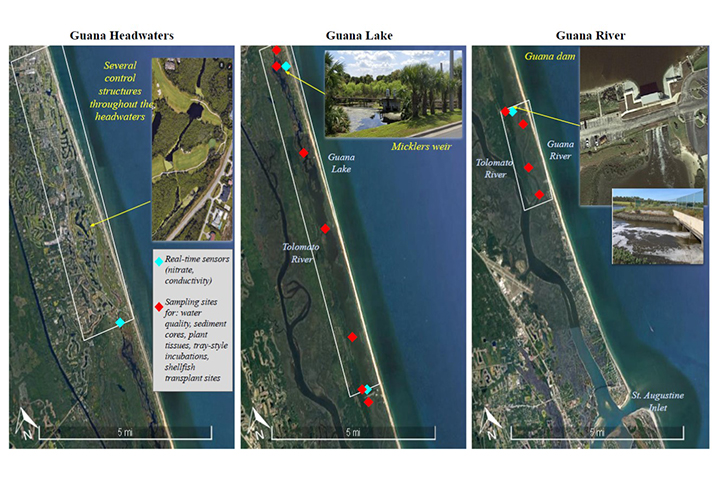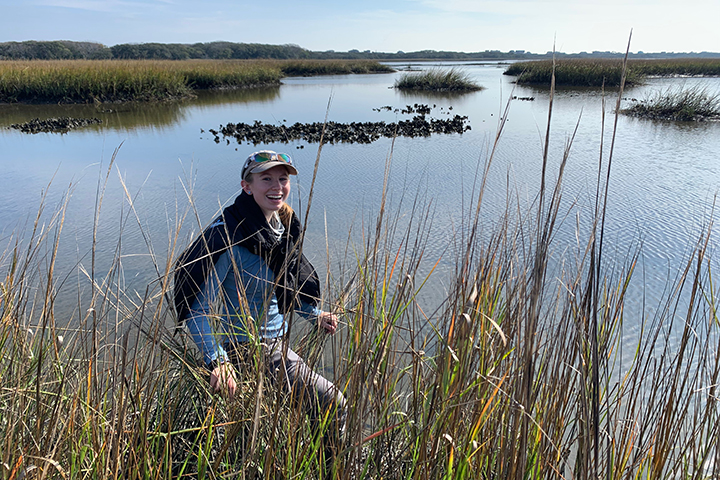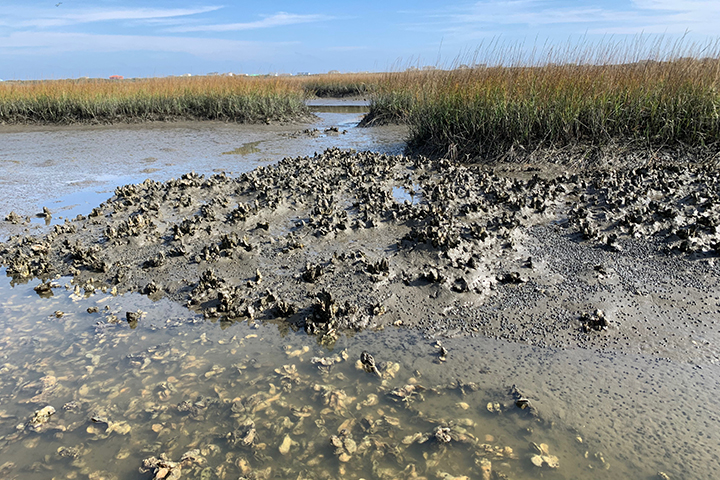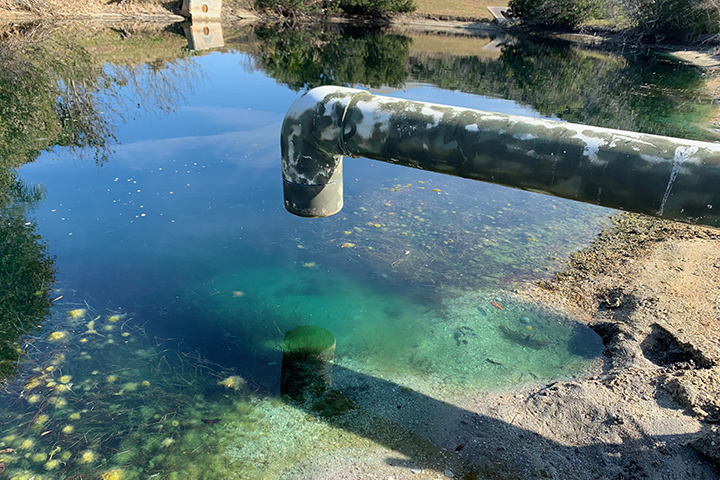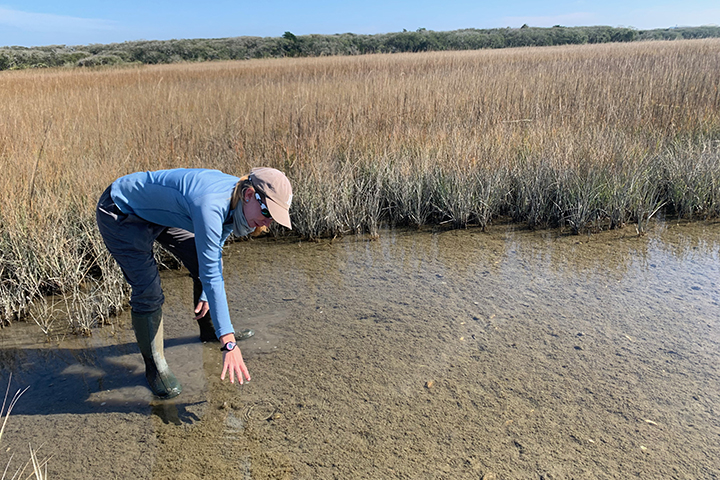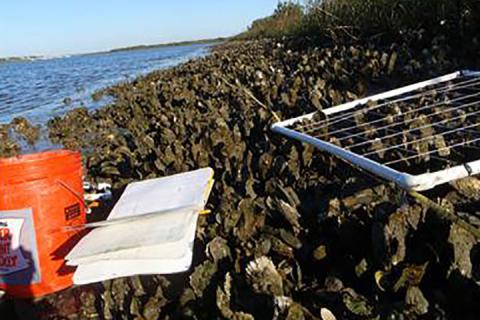
This project team will leverage a well-established collaborative group, GTM Reserve’s Oyster and Water Quality Task Force, and engage additional users, including state agencies, nonprofits and the oyster fishery community that are working to improve water quality in Guana River Estuary.
Many estuaries have been degraded by nitrogen pollution coming from urban and agricultural run-off, which can lead to algal blooms and eutrophication. Many of these same estuaries have also lost important shellfish communities, including oysters, clams and mussels that can filter water, remove nitrogen, and improve water quality. Restoring shellfish populations can help control eutrophication and achieve mandated water quality targets; however, this approach requires that managers have a good understanding of how nitrogen moves through their estuary and the nitrogen removal capacities of their shellfish communities. This project (also known as Guana Nutrients: Budgets and Bivalves) will help fill this information gap and support water quality management efforts in and around the Guana River Estuary in northeast Florida.
To assist with the development of restoration and management plans, this project will: 1) identify sources of nutrients to the Guana River Estuary, and determine how nutrient loads from the lake to the river are affected by hydrology and land use; 2) map the current distribution of shellfish communities; 3) quantify filtration and nitrogen removal by shellfish; and 4) conduct field and lab experiments to assess how water quality affects shellfish health, and also how shellfish affect water quality in the estuary. In collaboration with project end users, the project team will generate a suite of research products, including a coupled hydrodynamic-biogeochemical model for Guana Lake and monitoring and restoration recommendations. Project findings will be shared through a stakeholder workshop exploring ways to reduce nutrient inputs into the estuary, a training program for using shellfish for water quality remediation, and peer-reviewed and outreach publications.
Project Lead Ashley Smyth (University of Florida) gives a 5-minute introduction to "Assessing the Current and Potential Role of Shellfish for Improving Water Quality." The presentation was given during a project team workshop in July 2021.
